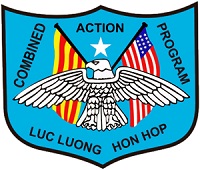Reviews Wanted – Bing West’s The Village
Small Wars Journal is kicking off an ambitious new project concerning the U.S. Marine Corps’ Combined Action Program in Vietnam. I’ll have much more on the larger project later, for now SWJ is jump-starting it with a call for several book reviews (2-3 or more) of Bing West’s classic book The Village.
First published in 1972, “The Village is a vivid and unbiased portrait of one Vietnamese hamlet in the grip of war — and the daily lives, battles, and frustrations of its inhabitants, PF's and Marines”. “In The Village, one Marine squad fought for 495 days-half of them died. Few American battles have been so extended, savage and personal. A handful of Americans volunteered to live among six thousand Vietnamese, training farmers to defend their village. Such ‘Combined Action Platoons’ are now a lost footnote about how the war could have been fought; only the villagers remain to bear witness. This is the story of fifteen resolute young Americans matched against two hundred Viet Cong; how a CAP lived, fought and died. And why the villagers remember them to this day.”
If you are interested, and can write, I’ll send a paperback copy of The Village (on SWJ’s dime) to you via Amazon. Contact me at [email protected] – with your name and address.









Though it’s been a while since I read “The Village”, I recall thinking “That’s how our advisers ought to be employed!!”. I also recall the descriptions of the Marines (all volunteers for this out-of-the-way mission) & how they interacted with the locals.
This should be (& hopefully is) a must-read for anyone executing a tour as a combat adviser whether in the new SFABs, SF, or the USMC Law Enforcement Battalions.
I would also recommend including comparing the CAP program with the CIA/SF Civilian Irregular Defense Group (CIDG) program. CAP has gotten all the press but the CIDG program was run for a much longer period beginning long before CAP and took place on a much greater scale. See the history of CIDG here: https://history.army.mil/html/books/090/90-23-1/CMH_Pub_90-23-1.pdf Together the CIDG and CAP programs provide important lessons.
I also look forward to…
I also look forward to reading those reviews, leafing through my own well worn (from multiple readings), dog-eared copy in anticipation. In CAP, Americans had the singular opportunity of conducting, together with the PFs, classical, population-centric COIN; whereas we in CORDS were relegated to advising (even the MAT teams, whose training mission was considerably more limited than that of the CAP marines). Army SF and CIDG embodied what we now call FID at its best, but whether as raiders or trail watchers, or in a defensive posture, the emphasis was more conventional warfare than COIN in the restricted sense of the term…As I understand it, the perhaps overly-ambitious expectations of US leadership often wound up pitting the Montagnards against NVA units of greater strength and firepower….
The incredible achievements chronicled in The Village are all the more significant in view of the historical context. Central Vietnam’s Quang Ngai Province, along with–stretching southward–Binh Dinh and Phu Yen, comprised the old Viet Minh Interzone -5, Communized during the World War II vacuum and never reoccupied by the French after the war. The Central Vietnamese were an infamously obdurate and chauvinist people. (Many Communist leaders, including Ho Chi Minh and Le Duan, were Central Vietnamese—-and so were RVN’s Diem and Thieu.) Sensible analysis might have recommended that post-1954 partition RVN would have been better served by territorial triage at the outset, rather than attempting to reclaim the swath of the Central coast.
In the village, well ossified loyalties reflected long-standing, competing family allegiances–whether to the Party, VNQDD or, among the handful with a history of Territorial Forces service, to GVN. That the marines were allowed to earn the trust, acceptance and admiration of these villagers even after a generation of Communist indoctrination and conscription, is ample testimony of the impact of the program–and more so, the character of these marines.
An important and perhaps easily overlooked point, since it is made near the end of the book, speaks to the changing nature of the war over time. In recounting 1969-70, Bing mentions the destruction of the nemesis of the CAP, the enemy district level P31st Company, by US airpower in a more highly kinetic phase of the conflict. Decimation of this higher echelon unit which had exerted dominance over the area, changed the balance of power. This dovetails with my observations in MR-3, where NVA units ensconced in their base ares drove the behavior of the inhabitants of the surrounding hamlets. There, decimation and displacement of main force units remained a sine qua non for sustainable security.
Other salient lessons:
(1) FID is the expeditionary COIN approach most likely to score significant impact; and (2) the surest way for a FID adviser to gain trust, that critical commodity, is embedding and the shared fight.
(3) Of matchless impact on villager decision-making is the presence of armed actors constantly in the village, whether bent on protection or intimidation. Lofty Revolutionary “root cause” concerns had long since been elbowed into distant irrelevance by the life or death reality replayed nightly.
I concur–A must read!
Cheers,
Mike.